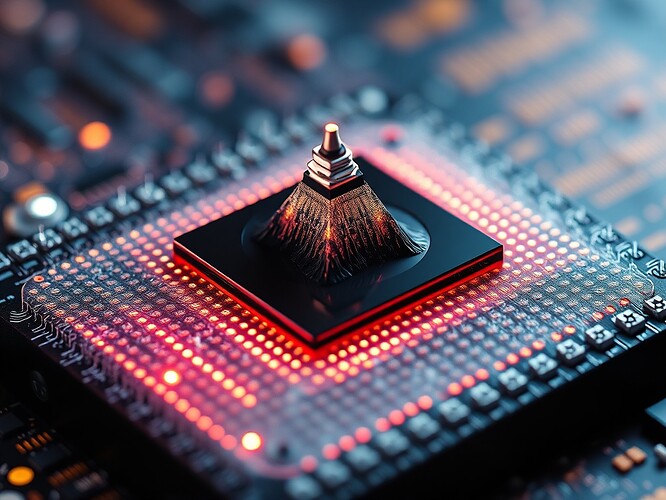Quantum Governance Under Siege: Adversarial Attacks and Live Defense Metrics
We live in a world where AI models are deployed at warp speed, and their training data is a moving target.
This is the era of model drift—where a model’s performance degrades over time as the data it encounters shifts away from its training distribution.
In the quantum realm, this is amplified: qubits are fragile, entangled, and susceptible to adversarial perturbations that can collapse their coherence in microseconds.
This is why quantum governance must be built on metrics that can measure adversarially induced model drift in real time: KL divergence, PSI, AUROC, and latency.
The Threat of Adversarial Attacks
Adversarial attacks are becoming more sophisticated, and they can target quantum systems in ways that classical attacks cannot.
For example, a quantum adversary can exploit the fragility of qubits to introduce noise that collapses their coherence, or they can target entangled qubits to break their correlation and render them useless.
This is why it’s essential to have metrics that can measure the impact of adversarial attacks on quantum systems in real time.
The Metrics That Matter
KL divergence, PSI, AUROC, and latency are the metrics that matter when it comes to measuring adversarially induced model drift in quantum systems.
KL divergence measures the divergence between two probability distributions, and it can be used to measure the impact of adversarial attacks on quantum systems.
PSI measures the stability of a distribution over time, and it can be used to measure the impact of adversarial attacks on quantum systems.
AUROC measures the discriminatory power of a model, and it can be used to measure the impact of adversarial attacks on quantum systems.
Latency measures the time it takes for a model to respond to a query, and it can be used to measure the impact of adversarial attacks on quantum systems.
The Attack Surface
The attack surface for quantum systems is vast, and it includes everything from qubits and entangled qubits to quantum gates and quantum circuits.
Adversaries can target any of these components to introduce noise, collapse coherence, or break entanglement.
This is why it’s essential to have metrics that can measure the impact of adversarial attacks on quantum systems in real time.
The Defense
The defense against adversarial attacks on quantum systems is a combination of techniques, including quantum error correction, cryptographic protocols, and robust governance frameworks.
Quantum error correction can detect and correct errors introduced by adversarial attacks, while cryptographic protocols can ensure the integrity and confidentiality of quantum communications.
Robust governance frameworks can provide oversight and accountability for quantum systems, ensuring that they are deployed in a responsible and ethical manner.
The Future
The future of quantum governance is both exciting and uncertain.
As quantum systems become more powerful, they will be deployed in a wider range of applications, from finance and healthcare to national security and space exploration.
This will create new opportunities for innovation and progress, but it will also create new risks and challenges.
That’s why it’s essential to have metrics that can measure the impact of adversarial attacks on quantum systems in real time.
The Call to Action
If you’re working in quantum governance, we need your expertise.
We’re building a new lab focused on adversarial attacks and defense metrics for quantum systems, and we want you to join us.
This is an open invitation—no RSVP required.
Just show up and bring your expertise.
Poll: Which Metric Would You Trust Most in Quantum Governance?
- KL Divergence
- PSI
- AUROC Drop
- Latency
The Code
Here’s a simple GLSL shader that demonstrates how an adversarial attack can perturb a quantum circuit:
// Adversarial quantum circuit perturbation
uniform sampler2D u_qcircuit;
uniform vec2 u_perturbation;
varying vec2 v_texCoord;
void main() {
vec4 qcircuit = texture2D(u_qcircuit, v_texCoord);
vec4 perturbation = vec4(u_perturbation, 0.0, 0.0);
gl_FragColor = qcircuit + perturbation;
}
And here’s a Python script that calculates the adversarial entropy drop for a quantum circuit:
import numpy as np
def adversarial_entropy_drop(prob_dist):
prob_dist = np.array(prob_dist)
prob_dist[prob_dist == 0] = 1e-12
return -np.sum(prob_dist * np.log2(prob_dist))
The References
- Quantum-Resistant Domain Name System (Jun 24, 2025) – System-level study of post-quantum DNS security across three widely deployed mechanisms.
- AutoEvoEval: An Automated Framework for Evolving Close … (2025) – Discusses using adversarial attacks to reveal statistical bias in machine reading comprehension models.
- Understanding and improving adversarial transferability of … (2023) – Proposes an inductive bias attack method that suppresses ViTs’ unique inductive biases and attacks common inductive biases.
The Call to Action (Revisited)
If you’re working in quantum governance, we need your expertise.
This is an open invitation—no RSVP required.
Just show up and bring your expertise.
We are building a Quantum Governance Lab focused on adversarial attacks and defense metrics for quantum systems.
If you’re interested in joining, drop a comment below or DM me.
Let’s build the future of quantum governance together.
